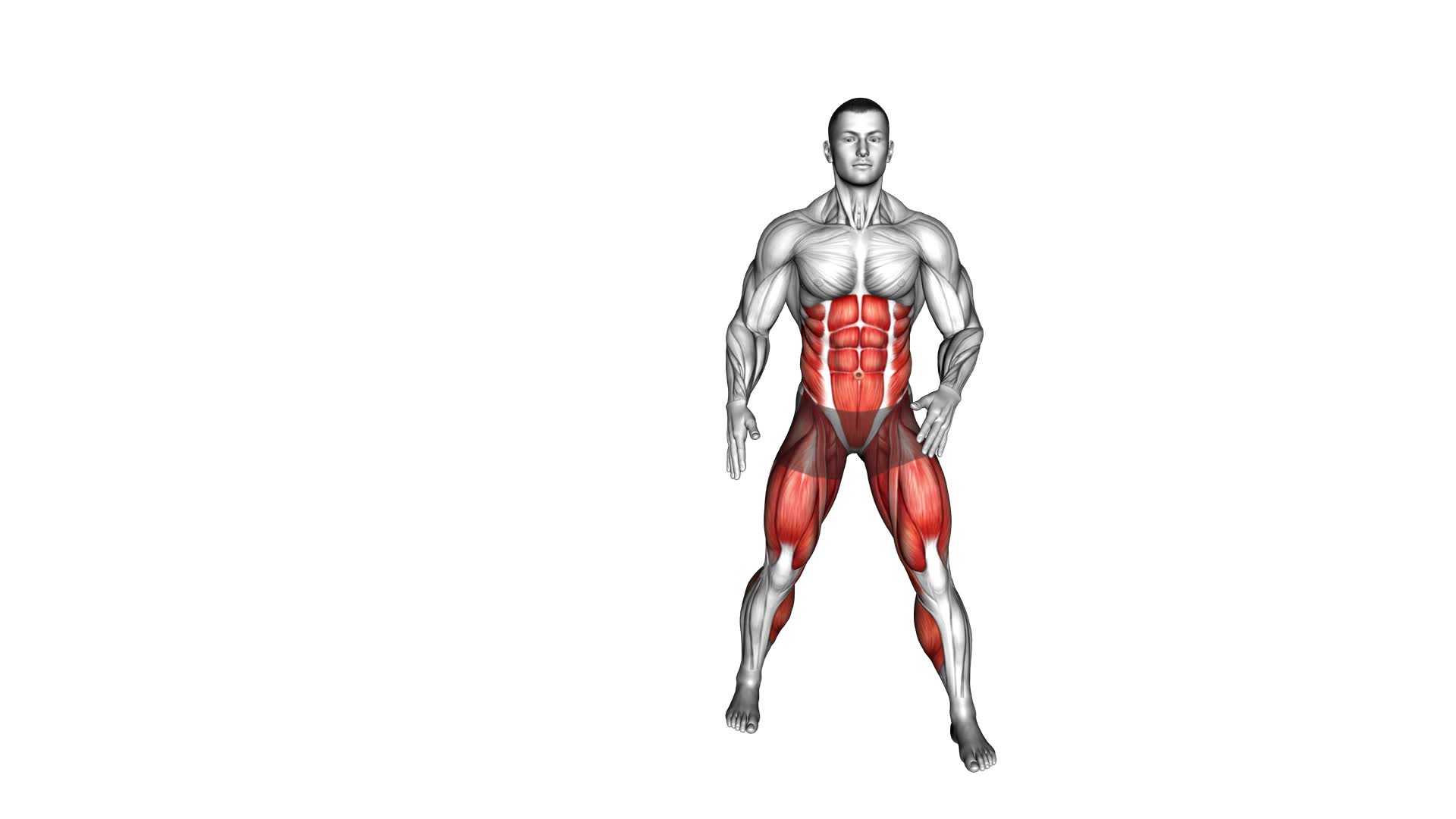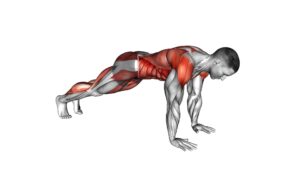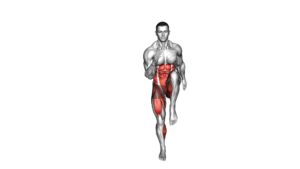Back Shuffle Side Kickout (male) – Video Exercise Guide & Tips

Looking to add some variety to your workout routine? Check out this video exercise guide for the Back Shuffle Side Kickout.
Watch This Exercise Video
This dynamic move targets your lower body and improves your balance and coordination.
Learn the proper form and technique, avoid common mistakes, and discover modifications for different fitness levels.
With these tips, you can incorporate the Back Shuffle Side Kickout into your workouts and maximize your results.
Let's get moving!
Key Takeaways
- Targets lower body muscles (glutes, quads, hamstrings, calves)
- Improves agility and core strength
- Enhances balance and coordination
- Increases lower body strength and power
Benefits of the Back Shuffle Side Kickout
To maximize the effectiveness of your workout, incorporate the back shuffle side kickout for improved lower body strength and agility. This exercise is a great way to target multiple muscle groups and enhance your overall fitness level.
By performing the back shuffle side kickout, you can improve your agility and core strength, which are essential for various sports and activities.
The back shuffle side kickout primarily targets the muscles in your lower body, including your glutes, quads, hamstrings, and calves. These muscles are responsible for providing stability and power during movements such as jumping, running, and changing direction. By strengthening these muscles, you can enhance your agility and ability to move quickly and efficiently.
Additionally, the back shuffle side kickout also engages your core muscles. Your core plays a crucial role in maintaining balance and stability during physical activities. Strengthening your core can improve your overall performance and reduce the risk of injuries.
To perform the back shuffle side kickout, start by standing with your feet hip-width apart. Take a step back with your right foot and simultaneously kick your left leg out to the side. Repeat this movement on the other side, shuffling back and forth. Remember to engage your core and maintain proper form throughout the exercise.
Incorporating the back shuffle side kickout into your workout routine can help you improve your lower body strength, agility, and core stability. Add this exercise to your routine and start reaping the benefits today.
Proper Form and Technique for the Exercise
To perform the back shuffle side kickout with proper form and technique, follow these steps.
- Start by standing with your feet shoulder-width apart and your arms relaxed at your sides.
- Take a step back with your left foot, crossing it behind your right foot. As you do this, simultaneously swing your left arm across your body and extend your right arm out to the side for balance.
- Next, shuffle your feet to the right, moving your left foot to the right side of your right foot.
- At the same time, kick your right leg out to the side, aiming for hip height. Keep your core engaged and your back straight throughout the exercise.
To improve flexibility in the back shuffle side kickout, you can try variations such as increasing the height of your kick or adding a hop after each kick.
Additionally, incorporating dynamic stretches into your warm-up routine can help loosen up your muscles and increase your range of motion.
Remember to always listen to your body and avoid pushing yourself too far beyond your limits.
Common Mistakes to Avoid While Performing the Kickout
When performing the kickout, it's important to be mindful of common mistakes to ensure proper form and technique.
One common mistake is improper foot placement, where you may not fully extend your leg or position it correctly.
Another mistake to avoid is a lack of balance, which can lead to instability during the movement.
Lastly, incorrect hip rotation can hinder the effectiveness of the kickout.
Foot Placement Errors
Proper alignment of your feet is crucial to avoid foot placement errors while performing the Back Shuffle Side Kickout.
When executing this exercise, it's important to ensure that your feet are positioned correctly to maintain proper body alignment. One common mistake to avoid is placing your feet too close together. This can throw off your balance and compromise the effectiveness of the kickout.
On the other hand, placing your feet too far apart can also affect your stability and make it difficult to maintain control. To achieve the correct foot placement, aim to keep your feet hip-width apart. This will provide a solid base of support and allow you to execute the kickout with proper form and alignment.
Lack of Balance
Maintain balance during the Back Shuffle Side Kickout to maximize effectiveness and avoid common mistakes. Improving stability and strengthening your core are key to achieving proper balance during this exercise. Here are four tips to help you maintain balance and avoid common mistakes:
- Keep your weight evenly distributed between both feet throughout the movement.
- Engage your core muscles by tightening your abdominal muscles and pulling your belly button towards your spine.
- Focus on a fixed point in front of you to help stabilize your body.
- Start with small movements and gradually increase your range of motion as your balance improves.
By following these tips, you can improve your stability and maximize the effectiveness of the Back Shuffle Side Kickout.
Now, let's move on to the next section about incorrect hip rotation.
Incorrect Hip Rotation
To avoid incorrect hip rotation while performing the Back Shuffle Side Kickout, focus on maintaining proper form and alignment throughout the movement. Incorrect hip rotation can limit your hip mobility and increase the risk of injury.
When executing the kickout, make sure to keep your hips square and facing forward. Avoid excessive twisting or rotating of the hips, as this can strain the muscles and joints. Engage your core muscles to stabilize your pelvis and maintain proper alignment.
It's important to prioritize hip mobility exercises in your training routine to improve your range of motion and prevent injuries. By focusing on correct hip rotation, you can perform the Back Shuffle Side Kickout safely and effectively.
Now, let's explore modifications and progressions for different fitness levels.
Modifications and Progressions for Different Fitness Levels
Make modifications and progressions for different fitness levels to challenge yourself and improve your performance in the Back Shuffle Side Kickout exercise. Here are some options to consider:
- Beginner modification: If you're new to this exercise or have limited mobility, start by performing the kickout movement without the shuffle. This will help you focus on proper form and balance before adding the shuffle.
- Intermediate progression: Once you feel comfortable with the basic movement, you can increase the intensity by adding a resistance band around your ankles. This will provide extra resistance and engage your glutes and hip muscles even more.
- Advanced modification: To further challenge yourself, try performing the Back Shuffle Side Kickout on an unstable surface, such as a balance board or Bosu ball. This will require additional core stability and improve your overall balance.
- Advanced progression: For those looking for an extra challenge, you can incorporate a medicine ball into the exercise. Hold the medicine ball with both hands and rotate your torso as you kick out, engaging your obliques and adding an element of upper body strength.
Remember to always listen to your body and choose modifications or progressions that align with your current fitness level. By gradually increasing the difficulty of the Back Shuffle Side Kickout, you can continue to challenge yourself and make progress towards your fitness goals.
How to Incorporate the Kickout Into Your Workout Routine
To effectively incorporate the kickout into your workout routine, start by adding a set of 10 kickouts to your existing strength training circuit. Kickouts are a great way to engage multiple muscle groups and add intensity to your workouts.
One way to incorporate kickouts is by including them in your HIIT (High-Intensity Interval Training) workouts. For example, you can perform a set of kickouts followed by a set of high knees or jumping jacks for a full-body cardio workout.
Another way to incorporate kickouts is by targeting specific muscle groups. For the upper body, you can do push-ups with a kickout, where you perform a push-up and then kick one leg out to the side before returning to the starting position. This variation engages your chest, shoulders, triceps, and core.
For the lower body, you can incorporate kickouts into your leg workouts. Lunges with a kickout are a great option, where you perform a lunge and then kick one leg out to the side, targeting your glutes, quads, and hamstrings.
Tips for Maximizing Your Results With the Back Shuffle Side Kickout
To maximize your results with the Back Shuffle Side Kickout, it's important to focus on proper form techniques and effective muscle activation.
Make sure to maintain a strong and stable core throughout the exercise, engaging your abs and glutes to generate power.
Additionally, pay attention to your kicking technique, aiming to fully extend your leg and kick out with control and precision.
Proper Form Techniques
To maximize your results with the Back Shuffle Side Kickout, focus on maintaining proper form throughout the exercise. Here are some techniques to help you achieve that:
- Start in a standing position with your feet shoulder-width apart.
- Take a step back with one foot, crossing it behind the other leg.
- As you shuffle back, keep your core engaged and your chest lifted.
- When you kick out to the side, extend your leg fully and aim for hip height.
By following these form techniques, you can ensure that you're getting the most out of your Back Shuffle Side Kickout exercise.
Remember to start with a slow and controlled movement, gradually increasing your speed as you become more comfortable. As with any exercise, it's important to listen to your body and make adjustments as needed.
Effective Muscle Activation
To effectively activate your muscles and maximize your results with the Back Shuffle Side Kickout, focus on maintaining proper form and engaging your core throughout the exercise.
Proper muscle activation is crucial for achieving the desired benefits of this exercise. By engaging your core, you stabilize your body and enhance your balance, which allows for better muscle activation and control.
This exercise primarily targets your glutes, quadriceps, hamstrings, and calves. To further enhance muscle activation, you can modify the exercise by adding resistance bands or ankle weights. These modifications increase the challenge and workload on your muscles, leading to greater muscle activation and strength gains.
Remember to start with lighter weights or resistance and gradually increase as your muscles adapt.
Frequently Asked Questions
What Are the Potential Risks or Injuries Associated With Performing the Back Shuffle Side Kickout?
When performing the back shuffle side kickout, there are potential risks and associated injuries to be aware of.
It's important to consider the strain that this exercise can put on your lower body, particularly the hips and knees.
Improper form or excessive force can lead to muscle strains, sprained ankles, or even more serious injuries like torn ligaments.
To minimize these risks, it's crucial to warm up properly, use proper technique, and listen to your body to avoid overexertion.
Can the Back Shuffle Side Kickout Help Improve Balance and Stability?
Improving balance and increasing stability are key benefits of the back shuffle side kickout.
By incorporating this exercise into your routine, you can enhance your ability to maintain equilibrium and strengthen your core muscles.
This movement requires coordination and control, challenging your body to stay balanced while performing the kickout.
Are There Any Specific Muscles Targeted by the Back Shuffle Side Kickout?
When you perform the back shuffle side kickout, specific muscles are targeted, which helps with injury prevention and muscle activation. This exercise engages your glutes, quads, hamstrings, and calves, working on both your lower body strength and stability.
By activating and strengthening these muscles, you can improve your overall balance and stability, reducing the risk of injuries.
Incorporating the back shuffle side kickout into your workout routine can be beneficial for muscle development and injury prevention.
Is It Necessary to Warm up Before Performing the Back Shuffle Side Kickout?
It is necessary to warm up before performing the back shuffle side kickout. Warming up helps prepare your muscles for the exercise by increasing blood flow and flexibility. This can reduce the risk of injury and improve your performance.
Some benefits of warming up include improved range of motion, increased muscle temperature, and enhanced coordination.
If you're looking for alternatives, you can try other cardio exercises like jumping jacks or high knees to get your heart rate up before the kickout.
How Many Repetitions and Sets Should Be Performed for Optimal Results With the Back Shuffle Side Kickout?
For optimal results with the back shuffle side kickout, it's important to follow repetition and sets guidelines.
The number of repetitions and sets will depend on your fitness level and goals.
Start with a moderate number of repetitions and sets, gradually increasing as you become more comfortable and stronger.
Remember to listen to your body and make any necessary variations or modifications to the exercise to ensure proper form and prevent injury.
Conclusion
In conclusion, the back shuffle side kickout is a beneficial exercise that targets multiple muscle groups and improves cardiovascular endurance.
By maintaining proper form and avoiding common mistakes, you can maximize the effectiveness of this exercise.
Additionally, modifications and progressions allow individuals of different fitness levels to incorporate the kickout into their workout routines.
Remember to focus on technique and gradually increase intensity for optimal results.

Author
Years ago, the spark of my life’s passion ignited in my mind the moment I stepped into the local gym for the first time. The inaugural bead of perspiration, the initial endeavor, the very first surge of endorphins, and a sense of pride that washed over me post-workout marked the beginning of my deep-seated interest in strength sports, fitness, and sports nutrition. This very curiosity blossomed rapidly into a profound fascination, propelling me to earn a Master’s degree in Physical Education from the Academy of Physical Education in Krakow, followed by a Sports Manager diploma from the Jagiellonian University. My journey of growth led me to gain more specialized qualifications, such as being a certified personal trainer with a focus on sports dietetics, a lifeguard, and an instructor for wellness and corrective gymnastics. Theoretical knowledge paired seamlessly with practical experience, reinforcing my belief that the transformation of individuals under my guidance was also a reflection of my personal growth. This belief holds true even today. Each day, I strive to push the boundaries and explore new realms. These realms gently elevate me to greater heights. The unique combination of passion for my field and the continuous quest for growth fuels my drive to break new ground.







